Officials leave with 15 best practices, 4 are nurse-driven

After a five-day visit to Cleveland Clinic’s main campus and Northern Ohio family health centers, ambulatory care centers and outpatient locations, officials from the Joint Commission on Accreditation of Healthcare Organizations noted they were highly impressed.
Cleveland Clinic is a non-profit academic medical center. Advertising on our site helps support our mission. We do not endorse non-Cleveland Clinic products or services. Policy
In fact, they left the visit with 15 best practices in hand – all of which will be shared as resources for other Joint Commission-accredited hospitals and healthcare organizations.
“The best practices the Joint Commission identified are those that are considered ‘new’ to the surveyors, meaning they’ve never seen these exact practices, policies or protocols before,” says Meredith Foxx, Associate Chief Nursing Officer of Advanced Practice Nursing and Nursing Quality and Practice. “To have 15 best practices identified is a lot, even for a big organization like ours.”
The visit was Cleveland Clinic main campus’ triannual unannounced accreditation survey, which occurs for every Joint Commission-accredited organization at least every 36 months. The survey included 12 surveyors who could visit a total of 136 main campus sites.
In addition to the commendable number of identified best practices, surveyors found very few citations and most were corrected on the spot.
“The findings really speaks to how well we consistently conduct day-to-day operations,” Foxx adds. “Throughout the entire survey, the surveyors witnessed our health system goal to be the safest place for patients to receive care and for caregivers to work. They recognized that our caregivers want to learn and grow to provide the best care for our patients and that our culture supports and fosters that environment.”
Aaron Hamilton, MD, MBA, FACP, SFHM, Interim Chief Quality Officer for Cleveland Clinic health system, agrees.
“It was a phenomenal visit and an important reflecting moment for us to see and appreciate the exceptional teamwork we have in service of our patients. It validated that we are ‘patient-ready’ (instead of ‘survey-ready’) and every day, we are ready to care for patients in the highest-quality way,” he says. “At the close of our survey, the surveyors commented that throughout the week we fostered an awesome learning experience for them and they left feeling inspired. That statement is an incredible testament to the amazing work we are doing. If we can create that feeling for our surveyors, imagine how our patients feel when they leave the hospital.”
From systemwide work on opioids and sepsis to the use of visual management process confirmation boards and more, Joint Commission surveyors noted several instances in which Cleveland Clinic surpassed expectations.
The 15 best practices that made a lasting impression on the Joint Commission surveyors included:
“What’s especially impressive about these 15 highlighted practices is that many are utilized across our health system – not just at main campus. Additionally, they represent several departments, institutes and caregiver groups,” says Dr. Hamilton. “For example, daily tiered huddles are an executive leadership initiative, the blessing of bone marrow cells was a collaboration between the Center for Spiritual Care and oncology caregivers and the SHIELD Conference resulted due to a partnership with the Nursing Institute and Protective Services.”
Foxx notes that four of the Joint Commission’s 15 identified best practices originated from Cleveland Clinic’s Stanley Shalom Zielony Institute for Nursing Excellence.
The idea to host a caregiver safety conference came after discussions among Cleveland Clinic’s executive nursing leadership team about the growing concerns of violence and burnout in the workplace. The team approached Cleveland Clinic’s Protective Services about developing an education event, and SHIELD was born.
The names of patients who pass away each day are also read every morning at Cleveland Clinic’s Tier 6 Daily Tiered Huddle (CEO and Operations Council). Cleveland Clinic’s Center for End of Life Care, along with the Nursing Institute, adopted the original idea from a University of Virginia Medical Center emergency department and palliative care liaison nurse.
According to Foxx, Cleveland Clinic’s nurses were the primary escorts and communicators for Joint Commission surveyors throughout the recent site visit.
“Nurses are great in this role because they can comfortably and confidently speak to our level of engagement, performance improvement, quality improvement and continuous improvement as they are leading and driving a lot of these areas,” Foxx adds. “During the survey, you could sense how proud Cleveland Clinic’s nurses were of the patient care they provide.”

Phone triage system reduces call backs and delays in care
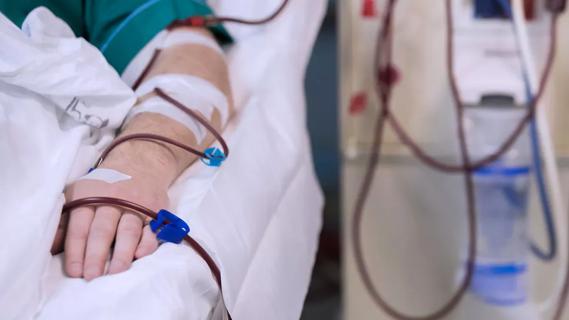
New protocol reduces costs, increases patient and caregiver satisfaction
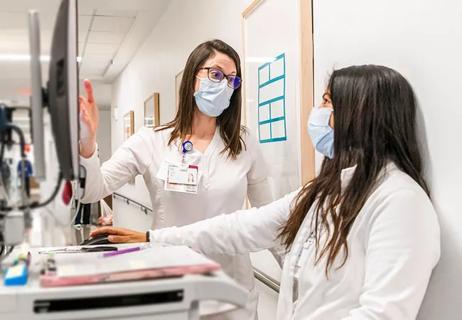
New options benefit caregivers, nursing units and patients
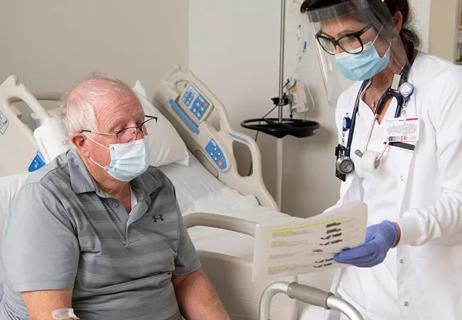
Nurses facilitate preoperative program to educate and prepare patients for ongoing care
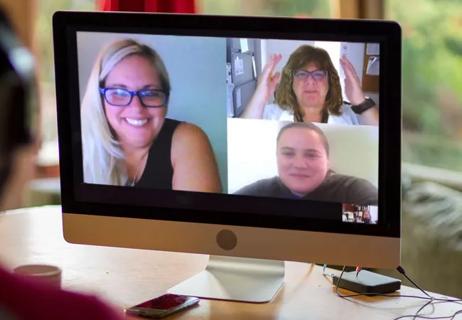
Introduces at-home work and new patient screening tool

Health disparities, mental health and more

Ideas for approaches to prevention, response and more
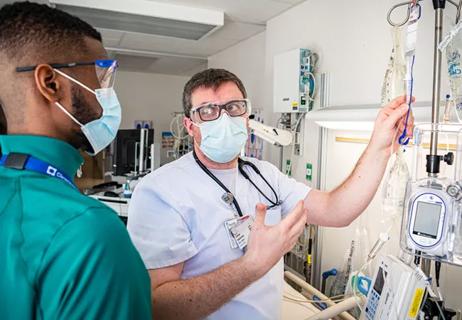
Educating and developing generations of nurses